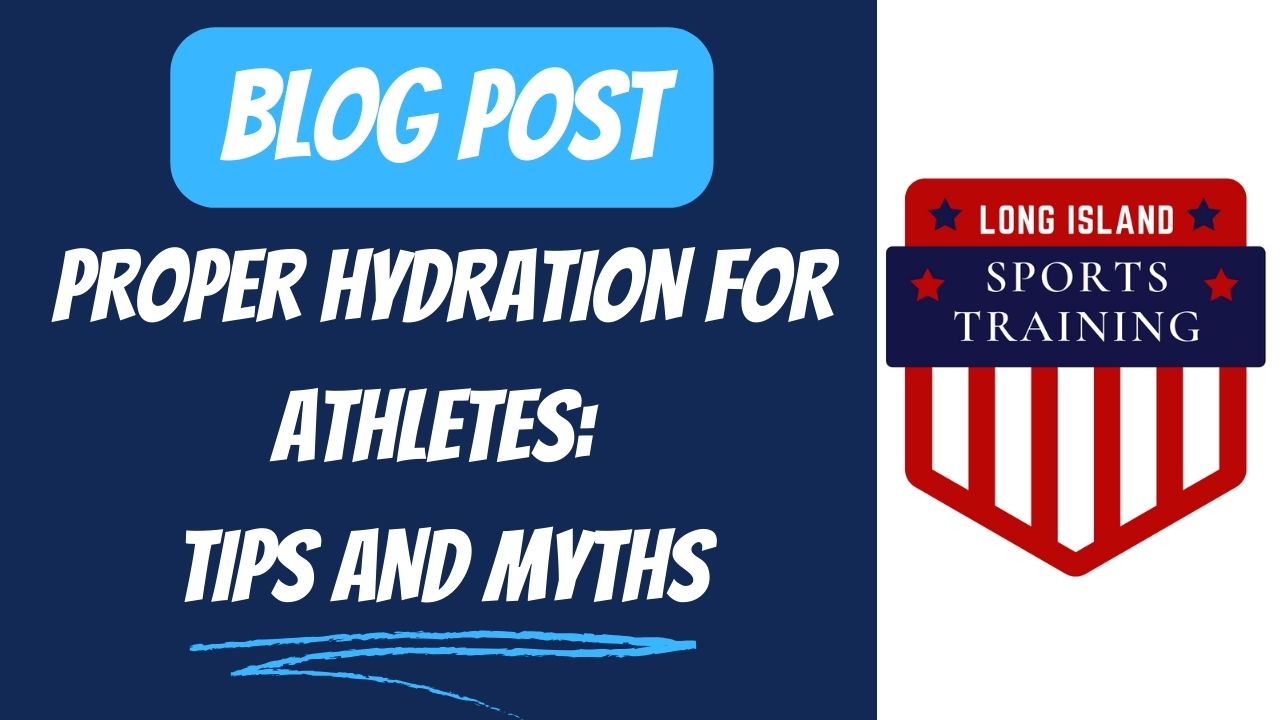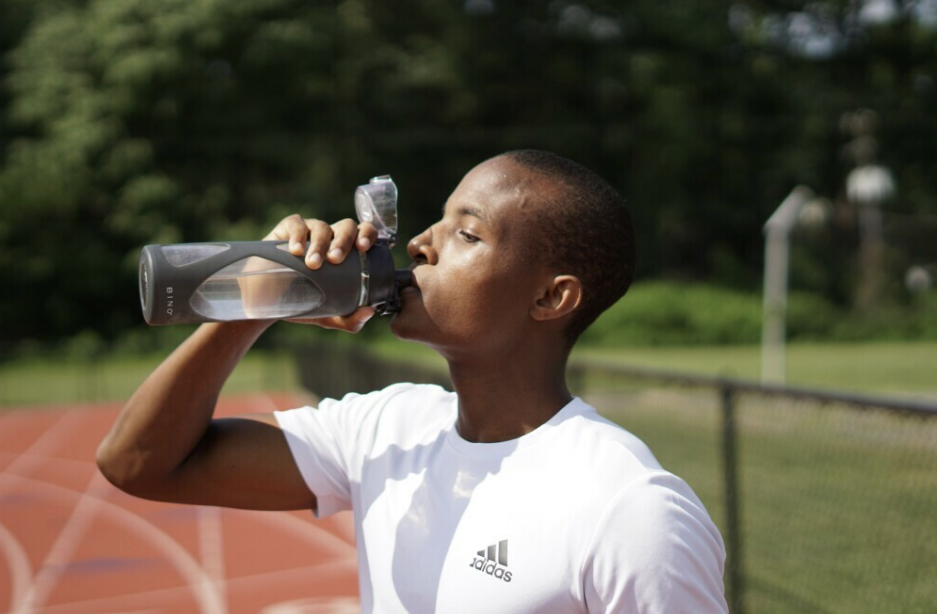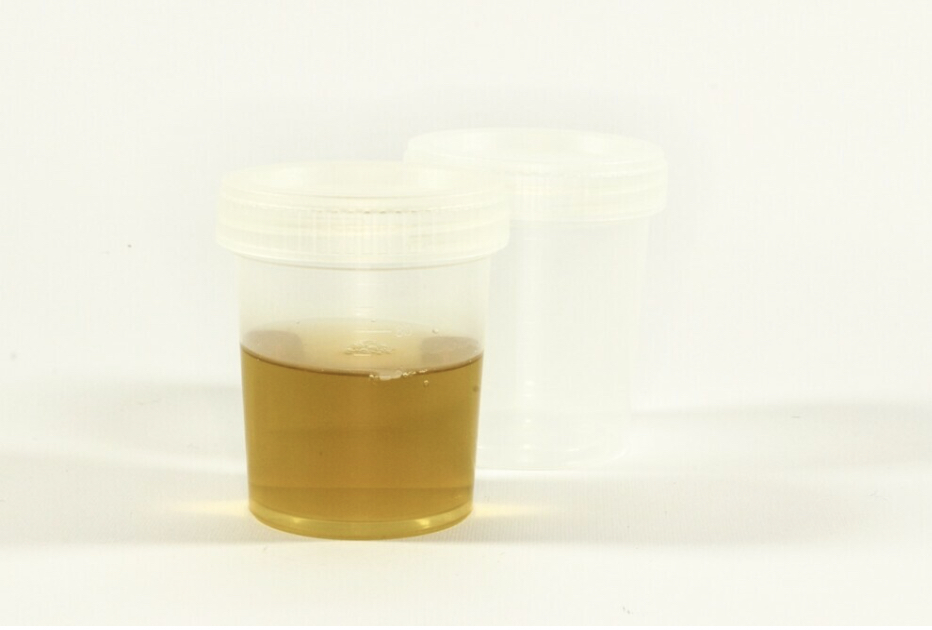Proper Hydration for Athletes: Tips and Myths
 Proper Hydration For Athletes: Tips And Myths
Proper Hydration For Athletes: Tips And Myths
In this blog, Proper Hydration for Athletes: Tips and Myths, we will focus on essential strategies to keep athletes optimally fueled and debunking common misconceptions that might be hindering their performance.
In the world of sports and fitness, proper hydration is a critical factor that can significantly impact an athlete’s performance. Staying adequately hydrated is not only essential for overall health but also plays a key role in optimizing athletic abilities.
Today, we’ll explore some valuable tips and debunk common myths surrounding proper hydration for athletes.
Tips On Proper Hydration For Athletes
The significance of proper hydration extends far beyond the water bottle on the sidelines – it’s a cornerstone of athletic success.
By separating fact from fiction, here are some tips for proper hydration to help guide athletes toward a well-hydrated and high-performance journey.
1. Water, The Ultimate Hydration Source
The importance of water cannot be overstated. It’s the most natural and effective way to stay hydrated. Athletes should prioritize regular water intake throughout the day, especially during training sessions and competitions. While sports drinks can be beneficial in specific situations, water remains the go-to source for hydration.
2. Individualized Hydration Needs
Athletes vary widely in terms of body composition, metabolism, and workout intensity. There’s no one-size-fits-all approach to hydration. It’s crucial for athletes to understand and cater to their individual needs. Factors such as climate, duration of exercise, and personal sweat rates should be considered when developing a hydration plan.
3. Electrolytes and Sports Drinks: Not Always Necessary
While electrolytes play a vital role in hydration, they’re not always needed in the form of sports drinks. For shorter workouts, water is often sufficient to maintain proper hydration. Save sports drinks for more extended, intense sessions where electrolyte replenishment becomes crucial.
4. Pre-hydration Matters
Waiting until you’re thirsty to drink water is not the best strategy. Athletes should focus on pre-hydration by consuming fluids before exercise. This helps ensure the body starts in a well-hydrated state and can delay the onset of dehydration during physical activity.
5. Monitor Hydration Status
Paying attention to urine color is a simple yet effective way to monitor hydration status. Clear to light yellow urine generally indicates adequate hydration, while darker urine may be a sign of dehydration. This can serve as a practical, real-time indicator for athletes to adjust their fluid intake.
How Much Water Should An Athlete Drink Per Day

The ideal water intake for athletes varies based on several factors, including individual differences, climate, and activity levels. As a general guideline, many experts recommend that athletes aim for about 3.7 liters (125 ounces) of water per day for men and 2.7 liters (91 ounces) for women.
However, it’s essential to note that individual hydration needs can differ. Athletes should consider factors such as their body weight, the intensity and duration of their training, climate conditions, and sweat rates. Monitoring urine color can provide a practical indicator — pale yellow to clear urine generally suggests adequate hydration.
In addition to daily hydration, athletes should focus on pre-hydration by consuming fluids before exercise and rehydration by replacing fluids lost during training or competition. It’s advisable to adjust water intake based on personal needs and to consult with a healthcare or sports nutrition professional for personalized guidance.
What Are The Proper Hydration Techniques For Athletes
Proper hydration techniques are crucial for athletes to optimize performance and ensure overall well-being.
Here are some key hydration techniques for athletes:
1. Individualized Hydration Plans:
- Tailor your fluid intake based on factors such as body weight, sweat rates, climate, and exercise intensity.
- Consider consulting with a sports nutritionist to develop a personalized hydration plan.
2. Pre-Hydration:
- Begin hydrating well before exercise, ideally a few hours in advance.
- Consume fluids like water or a sports drink to ensure you start your activity in a well-hydrated state.
3. During Exercise:
- Drink fluids regularly during exercise, aiming to replace sweat losses.
- For prolonged or intense activities, consider sports drinks containing electrolytes to help maintain a proper balance.
4. Post-Exercise Rehydration:
- Replace fluids lost during exercise by consuming water or a recovery beverage.
- Monitor urine color as an indicator of hydration status and adjust fluid intake accordingly.
5. Monitor Sweat Rate:
- Weigh yourself before and after exercise to estimate sweat losses.
- Consume 16-24 ounces of fluid for every pound lost during activity.
6. Listen to Thirst, but Don’t Rely Solely on It:
- Thirst is a good indicator, but it may not always reflect the body’s true hydration needs.
- Establish a drinking schedule, especially during longer activities, to stay ahead of thirst.
7. Avoid Overhydration:
- While hydration is crucial, excessive water intake can lead to hyponatremia.
- Balance fluid intake with individual needs to avoid overhydration.
8. Consider Electrolytes:
- In situations involving significant electrolyte loss (sweating), opt for sports drinks or electrolyte supplements to help maintain balance.
9. Be Mindful of Environmental Factors:
- Hot and humid conditions increase fluid needs. Adjust your hydration strategy accordingly.
Remember, hydration is a dynamic process, and it’s essential to adapt these techniques based on your unique circumstances. Regularly reassess and refine your hydration strategy to meet your evolving needs as an athlete.
What Is The Correct Process Of Hydrating During Athletic Activity
Proper hydration during athletic activity involves a strategic approach to maintain fluid balance and support optimal performance.
Here’s a step-by-step guide for hydrating during athletic activity:
1. Pre-Hydration:
- Start hydrating well before the activity, ideally a few hours in advance.
- Consume 16-20 ounces (approximately 500-600 mL) of water or a sports drink 2-3 hours before exercise.
- Aim to be well-hydrated at the beginning of the activity.
2. During Exercise:
- Regular Intervals: Consume fluids at regular intervals during the activity, even if you don’t feel thirsty.
- Sip, Don’t Guzzle: Avoid large, infrequent sips. Opt for smaller, more frequent sips to enhance absorption.
- Sports Drinks: For activities lasting longer than 60-90 minutes or involving intense exertion, consider a sports drink with electrolytes to replace sodium and other minerals lost through sweat.
- Monitor Sweat Rate: Be aware of your sweat rate and adjust fluid intake accordingly. Weighing yourself before and after exercise can help estimate fluid loss.
3. Fluid Choices:
- Water: For shorter durations and lower-intensity activities, water is generally sufficient.
- Sports Drinks: Provide electrolytes and carbohydrates, beneficial for more extended, high-intensity activities.
- Avoid Excessive Caffeine: Limit caffeinated beverages, as they can have a diuretic effect. Moderation is key.
4. Thirst as a Guide:
- Listen to Your Body: Thirst is a reliable indicator, but it’s important to stay proactive in maintaining hydration.
- Establish a Drinking Schedule: Especially for longer activities, establish a drinking schedule to prevent dehydration.
5. Environmental Considerations:
- Hot and Humid Conditions: Increase fluid needs in hot and humid environments.
- Cooling Strategies: Consider strategies like cooling vests or wet towels to mitigate heat stress.
6. Post-Exercise Rehydration:
- Replace Fluid Losses: Consume fluids to replace the weight lost during exercise.
- Include Electrolytes: If you’ve sweated significantly, consider beverages or snacks with electrolytes.
7. Individualized Approach:
- Know Your Needs: Understand your individual hydration needs based on factors like body weight, sweat rates, and activity type.
- Adjust Accordingly: Adapt your hydration strategy based on environmental conditions, activity duration, and your body’s response.
8. Practice and Refine:
- Trial and Error: Practice your hydration strategy during training to identify what works best for you.
- Refine Based on Experience: Use your experiences to refine your approach and make adjustments as needed.
Remember, maintaining proper hydration is a dynamic process that requires continuous attention and adaptation. Tailor your approach based on your specific requirements and the demands of the activity.
Common Myths Of Proper Hydration For Athletes
Here we will debunk some of the common myths surrounding proper hydration for athletes and the effect on athletic performance.
Myth 1: “Drink as Much Water as Possible”
Some athletes believe that more water is always better. However, excessive water intake, especially in a short period, can lead to a condition called hyponatremia.
It disrupts the balance of electrolytes in the body and can be harmful. Athletes should aim for a balanced and individualized approach to hydration.
Myth 2: “Caffeine Causes Dehydration”
Contrary to popular belief, moderate caffeine consumption does not necessarily lead to dehydration. While caffeine has a diuretic effect, the fluid from caffeinated beverages contributes to overall hydration.
Athletes can enjoy moderate amounts of caffeinated drinks without significant negative impacts on hydration.
Myth 3: “Only Water Is Needed for Hydration”
While water is a fundamental source of hydration, it may not be sufficient for more extended or intense activities. Sports drinks containing electrolytes and carbohydrates can be beneficial in situations where there is a significant loss of minerals through sweat.
Choosing the right beverage depends on the type and duration of the activity.
Myth 4: “Thirst is Not a Reliable Indicator”
Some athletes believe they should not rely on thirst as an indicator to drink water. While it’s essential to stay proactive about hydration, especially during exercise, thirst is a natural and reliable signal from the body. Athletes should listen to their bodies and drink when thirsty.
Myth 5: “Urine Should Always Be Clear”
While pale yellow to clear urine generally indicates proper hydration, the belief that urine should always be completely clear is a myth. Overhydration can lead to colorless urine, which may not be optimal. Monitoring urine color within a healthy range (pale to medium yellow) is a more balanced approach.
Myth 6: “Electrolyte Supplements Are Always Necessary”
While electrolytes are crucial for hydration, especially in prolonged or intense activities, not every athlete needs electrolyte supplements. For shorter and less intense exercises, a well-balanced diet and regular meals can provide sufficient electrolytes.
Individual needs vary, so unnecessary supplementation should be avoided.
Dispelling these hydration myths is essential for athletes to adopt a well-informed and balanced approach to fluid intake.
Understanding individual needs, listening to the body’s signals, and considering the specific demands of the activity are key elements in developing an effective hydration strategy.
How To Measure Proper Hydration For Athletes With Urine

Monitoring urine color is a practical and accessible way for athletes to assess their hydration status.
Here’s a simple guide to using urine color as an indicator of proper hydration:
1. Clear to Light Yellow: Hydrated
- If your urine is pale yellow to clear, it generally indicates that you are well-hydrated.
- This color suggests a healthy balance of fluids in your system.
2. Medium Yellow: Adequately Hydrated
- A medium yellow color signals that you are adequately hydrated.
- While not as optimal as pale yellow, it still indicates a reasonable level of hydration.
3. Dark Yellow to Amber: Dehydration
- Dark yellow to amber-colored urine suggests dehydration.
- This may be an indication that you need to increase your fluid intake.
Tips for Using Urine Color as a Hydration Indicator:
- Consistency is Key: Check your urine color consistently at the same time each day for more accurate comparisons.
- Consider Supplements: Some vitamins and medications can influence urine color, so be aware of this when assessing hydration.
- Adjust Based on Activity: If you are engaging in intense physical activity, you may need to adjust your baseline color assessment, as exercise can temporarily darken urine.
Additional Points:
- Frequency of Urination: If you’re urinating regularly throughout the day and the volume is within a normal range, it’s a positive sign for hydration.
- Thirst Perception: Pay attention to your body’s signals. If you’re consistently thirsty, it may indicate the need for increased fluid intake.
Remember:
Individual hydration needs can vary, so it’s important to use urine color as one part of a broader hydration assessment. Athletes should also consider factors like sweat rate, activity duration, and climate conditions when determining their hydration strategy.
If there are concerns about hydration or if performance is impacted, consulting with a healthcare or sports nutrition professional can provide personalized guidance.
Conclusion
In conclusion, the pursuit of athletic excellence, mastering the science of hydration is not merely a suggested strategy but a fundamental necessity. As we wrap up our exploration of Proper Hydration for Athletes: Tips and Myths, it becomes evident that effective hydration is a dynamic, personalized and necessary journey.
Furthermore, whether you’re an elite athlete or a fitness enthusiast, the journey to proper hydration is a voyage of self-discovery. Armed with tips rooted in science and a renewed perspective free from hydration myths, athletes are empowered to fuel their bodies effectively, reaching new heights in their athletic endeavors.
Additionally, athletes are encouraged to listen to their bodies, establish consistent hydration habits and consider environmental factors in their fluid intake strategies.
We’ve revealed crucial tips, emphasizing the need for individualized hydration plans, pre-hydration strategies and vigilant monitoring during exercise. We touched upon the significance of post-exercise rehydration and the practical use of urine color as a reliable indicator.
Moreover, we debunked common myths surrounding athlete hydration, dispelling notions like the more-is-better approach and the idea that caffeine necessarily leads to dehydration.
By unraveling these misconceptions, athletes can adopt a more nuanced and informed perspective, tailoring their hydration practices to align with their unique needs and activities.
Let’s Talk: Contact Tim @ Long Island Sports Training
If you are looking for local sports or fitness training sessions to help you reach peak performance contact us:
Web Page:
https://longislandsportstraining.com/services/
Phone:
631-594-4048
Email:
Tim@LongIslandSportsTraining.Com
